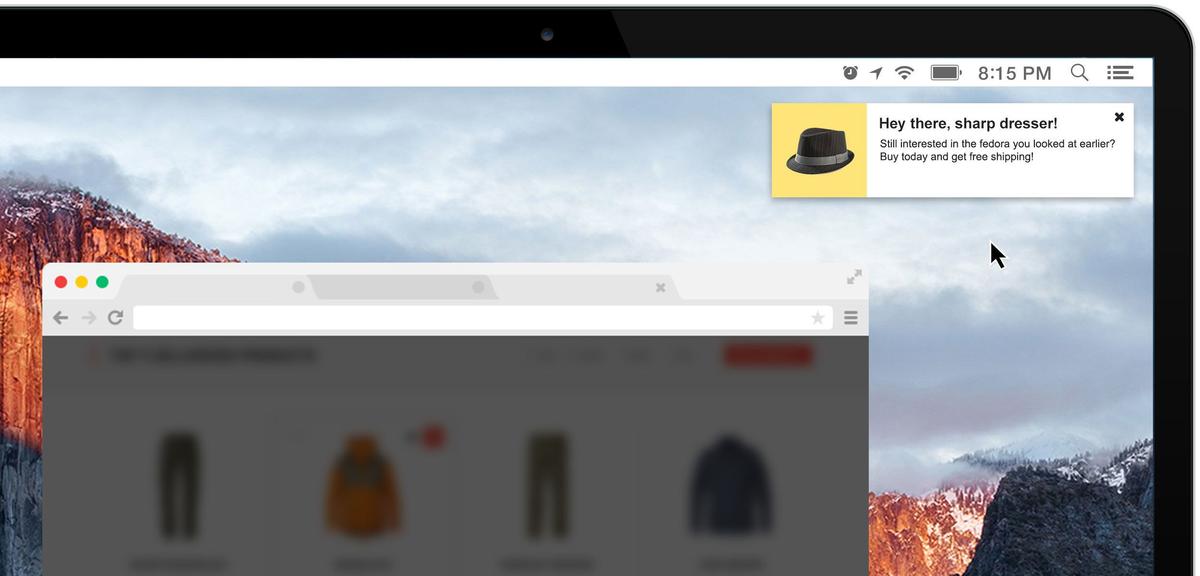Web Push Notifications Have Changed Marketing—And Your Job—Forever
Published on August 18, 2016/Last edited on August 18, 2016/3 min read


Team Braze
I love my iPhone. It never leaves my side. The first thing I do in the morning is roll over and with one eye open, start checking my favorite apps and messages. I have a borderline unhealthy relationship with my phone.
Despite my intense devotion toward mobile, when I walk into my office, I sit down in front of a desktop for the majority of the day. Everyone around me is working on their laptops as well, sneaking a look at their phones when they can.
While this is a purely anecdotal scenario, it does reflect what mobile and desktop consumption numbers indicate: mobile is king, but desktop is not dead.
The desktop is not dead
A few years ago, the number of mobile users surpassed the number of desktop users for the first time in history. No one will argue mobile’s growth is continuing to move up and to the right, while desktop is leveling off. But leveling off is not dead.
It’s easy to get caught up in the excitement of mobile and the opportunities it brings. However, Americans still spend a significant amount of time in front of a desktop. According to Mary Meeker’s state of the internet report, Americans are spending 24% of their daily screen time on a desktop or laptop.
Push notifications aren’t just for mobile anymore
While the desktop might not be as sexy as mobile lately, it’s going to continue to play a key role for marketers. Competition for online attention will only get more intense as time marches on; the value of an existing customer or user will only grow. We have seenhow effective mobile push notifications have been for businesses looking to retain app users. We’ll now see that same benefit applied to nurture loyal desktop users.
Web push notifications are the next frontier for digital marketers. As consumers, we’re going to start to see more opt-in requests as we browse our favorite websites. In turn, we’ll start to see the same types of notifications we’ve grown accustomed to on mobile, on our desktops.
What’s more, web push notifications also work on the mobile web, inhabiting a key space in consumer habits that mobile apps haven’t been able to reach. Web push notifications offer marketers an additional channel to integrate into their overall digital marketing strategy, and they could signal a shift in future marketing departments.
What this means for marketers
Marketing is always changing, but it’s more important than ever for marketers to stay on top of trends and new opportunities. Especially considering web push notifications didn’t come from new technology (like when the iPhone launched) but rather, an existing technology that still has some innovation left in its tank.
Just like companies have gone searching for full-stack developers (developers who can do both front and backend programming), companies will be searching for full-stack marketers. We’re going to start seeing less marketers with specialized titles, like email marketer, and more marketing positions with diverse responsibilities. Marketers are going to become multichannel experts, who are tasked with seeing the whole picture.
It will be exciting to see how brands incorporate web push notifications into their marketing mix and how it will enhance the future desktop and mobile web experience.
Releated Content
View the Blog
The new inbox reality: How iOS changes are reshaping email marketing

Aparna Prasad

Experience optimization: Turning data insights into better journeys

Team Braze

December 2025 Bonfire Marketer of the Month: Jagex’s Emma Oliver
